Sub-Saharan Africa
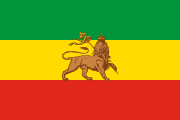
Ethiopia
royal flag 11 Often (but not always) flown by the royal house and the government.

Ethiopia
national flag 22 Flown by anyone.

Ghana

Rwanda

Guinea

Mali

Senegal
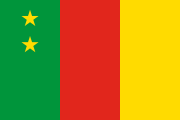
Cameroon
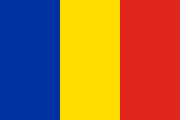
Chad
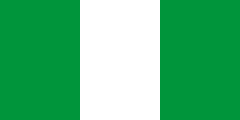
Nigeria
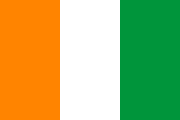
Ivory Coast
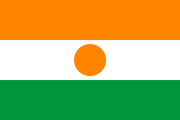
Niger
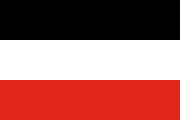
Upper Volta

Sierra Leone

Gabon
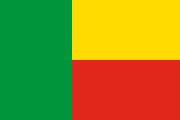
Dahomey
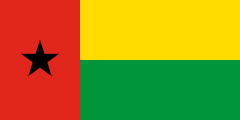
Guinea-Bissau

Malagasy Republic
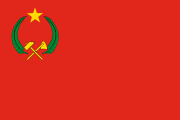
Congo

Malawi

Kenya
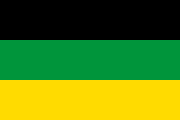
African National Congress
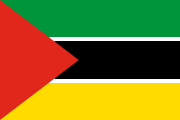
Mozambique
FRELIMO flag 33 Flag of the Liberation Front of Mozambique, which aimed for independence from Portugal. Direct predecessor of the modern flag of Mozambique. Portuguese colonies did not have official flags.
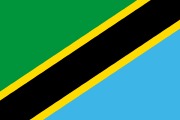
Tanzania
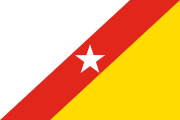
Angola
FNLA flag 44 Flag of the National Liberation Front of Angola, which aimed for independence from Portugal, and its government-in-exile in Kinshasa. Portuguese colonies did not have official flags.

Angola
MPLA flag 55 Flag of People's Movement for the Liberation of Angola, a competing independence movement. Direct predecessor of the modern Angolan flag.

Angola
UNITA flag 66 Flag of the National Union for the Total Independence of Angola, yet another independence movement.

Zambia
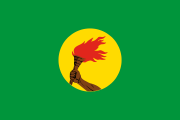
Zaire

São Tomé and Príncipe
MLSTP flag 77 Flag of the Movement for the Liberation of São Tomé and Príncipe, which aimed for independence from Portugal. Direct predecessor of the modern flag. Portuguese colonies did not have official flags.

Zimbabwe
ZANU flag 88 Flag of the Zimbabwe African National Union, which sought majority rule in the breakaway British colony of Rhodesia. The territory's illegal white supremacist government flew a green and white flag with the Rhodesian coat of arms.

Zimbabwe
ZAPU flag 99 Flag of the Zimbabwe African People's Union, a competing liberation movement.

Uganda

Togo

Liberia
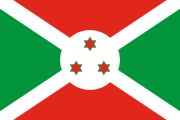
Burundi
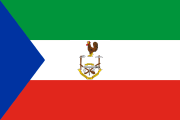
Equatorial Guinea

The Gambia

Botswana
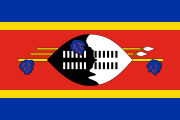
Swaziland
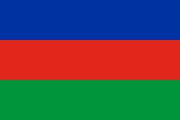
Namibia
SWAPO flag 1010 Flag of the South West Africa People's Organisation, which sought independence from South Africa. Direct predecessor of the flag of Namibia. The territorial government did not have an official flag.

Lesotho

Central African Republic
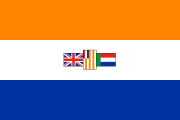
South Africa
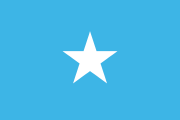
Somalia

Eritrea
ELF flag 1111 Flag of the Eritrean Liberation Front, which sought independence from Ethiopia. Derived from the previous national flag. The provincial government did not have an official flag.

Somali Coast
FLCS flag 1212 Flag of the Front for the Liberation of the Somali Coast, which sought indepdence from France. Eventually became the flag of Djibouti. The French Territory of the Afars and the Issas did not have an official flag.

Oromia
OLF flag 1313 Flag of the Oromo Liberation Front, a nationalist liberation movement within Ethiopia. Oromia did not have an official flag within Ethiopia at this time.
Middle East and North Africa

Turkey
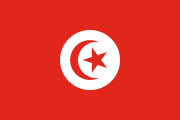
Tunisia
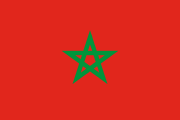
Morocco

Algeria
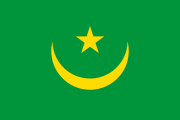
Mauritania
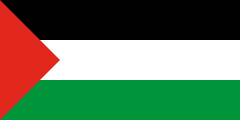
Palestine
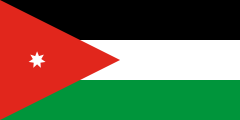
Jordan

Western Sahara
Polisario flag 1414 Flown by the Popular Front for the Liberation of Saguia el-Hamra and Río de Oro, which sought indepdence from Spain. The Spanish Sahara colony had no official flag, but ships registered there did fly a blue and yellow pennant.

United Arab Emirates
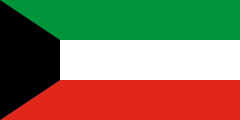
Kuwait

Sudan
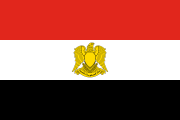
Egypt · Libya · Syria 1515 Flown by the Federation of Arab Republics. Its member states sometimes distinguished their flags by adding their country's name in small gold writing below the emblem.

Iraq

North Yemen

South Yemen

Israel
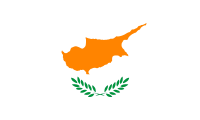
Cyprus
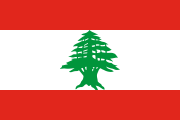
Lebanon
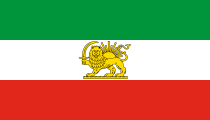
Iran
state flag 1616 Flown by the government, and often by private citizens. In certain ceremonial settings, the ratio was 1:3.
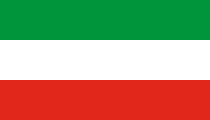
Iran
national flag 1717 Allowed to be flown by anyone.
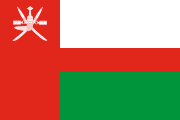
Oman
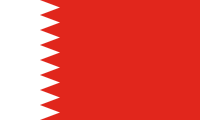
Bahrain

Qatar
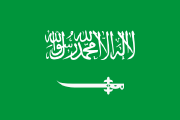
Saudi Arabia

Kurdistan

Druze

Assyrians
Western Europe
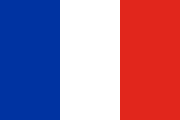
France

Italy

Ireland

Andorra
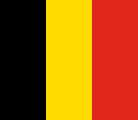
Belgium

Netherlands

Luxembourg

Austria
national flag 1818 Flown by private citizens and municipalities.

Austria
federal service flag 1919 Flown by the federal government and the armed forces.

Spain
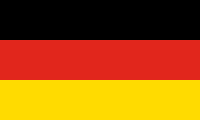
West Germany

East Germany
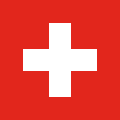
Switzerland
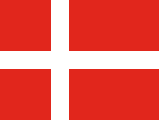
Denmark
national flag 2020 Allowed to be flown by anyone.
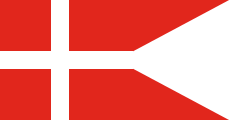
Denmark
sovereign flag 2121 Flown by the royal house, the government, and the armed forces. Also granted to a select list of private institutions and companies.

Norway
merchant flag 2222 Allowed to be flown by anyone.

Norway
state flag 2323 Flown only on state-owned buildings and naval ships.

Faroe Islands

Iceland
national flag 2424 Allowed to be flown by anyone.

Iceland
state flag 2525 Flown on government buildings and coast guard ships.
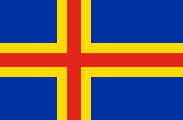
Åland
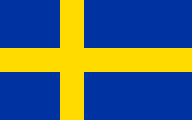
Sweden 2626 Flown for all purposes. A three-tailed version of the national flag is flown by the military.

Finland
national flag 2727 Allowed to be flown by anyone.
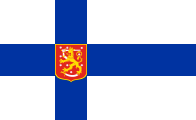
Finland
state flag 2828 Flown by the government, border guard, and public universities. The armed forces fly a version with a swallowtail cut.
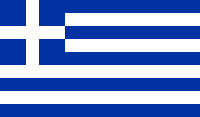
Greece 2929 During the rule of the junta, the shade of blue on the national flag was described as notably darker.
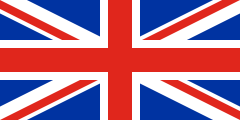
United Kingdom
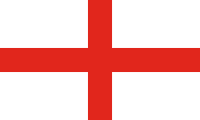
England · Guernsey
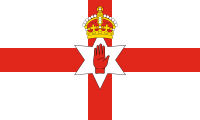
Northern Ireland
Ulster banner 3030 Northen Ireland has not had an official flag since 1973, but the Ulster Banner is still flown by some sporting teams and private citizens. More or less exclusively a unionist symbol. Nationalists tend to fly the Irish tricolour instead.

Scotland

Jersey

Wales

San Marino

Liechtenstein
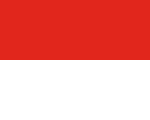
Monaco
national flag 3131 Allowed to be flown by anyone.

Monaco
princely flag 3232 Flown over the Prince's Palace and government buildings.

Gibraltar

Vatican City

Malta

Portugal

Canary Islands

Galicia

Catalonia
senyera 3333 The traditional Catalan flag.
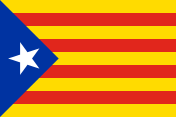
Catalonia
estelada 3434 The flag preferred by supporters of Catalan independence.

Brittany
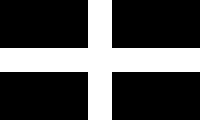
Cornwall
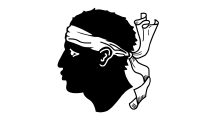
Corsica

Flanders

Wallonia
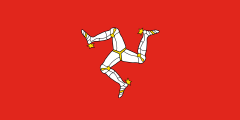
Isle of Man

Basque Country
Eastern Europe
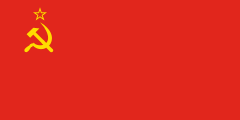
Soviet Union

Albania
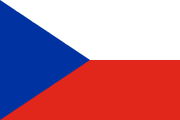
Czechoslovakia

Poland
state flag 3535 Flown over the Presidential Palace, parliament, provincial legislatures, and other government buildings. Private use highly restricted.
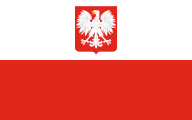
Poland
coat of arms flag 3636 Flown by embassies, airports, and merchant ships. Private use strictly banned.

Yugoslavia

Hungary
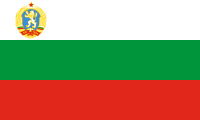
Bulgaria

Estonia 3737 Flown by the diplomatic service in exile and the Estonian disaspora. Flying the national flag was banned under the Soviet occupation.

Lithuania 3838 Flown by the diplomatic service in exile and the Lithuanian disaspora. Flying the national flag was banned under the Soviet occupation.

Latvia 3939 Flown by the diplomatic service in exile and the Latvian disaspora. Flying the national flag was banned under the Soviet occupation.

Romania
South Asia and the Indian Ocean

India
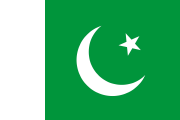
Pakistan
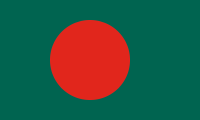
Bangladesh
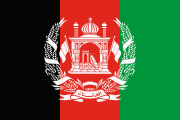
Afghanistan

Nepal

Bhutan
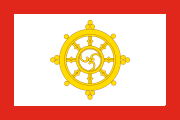
Sikkim
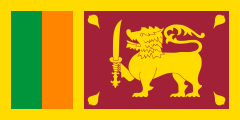
Sri Lanka

Maldives

Comoros

Mauritius

Jammu and Kashmir 4141 Flown in the Indian-controlled parts of the disputed region of Kashmir.

Azad Kashmir 4242 Flown in the Pakistan-controlled parts of the disputed region of Kashmir.

Nagaland 4343 Flown by nationalists and separatists. The Indian state of Nagaland does not have an official flag.
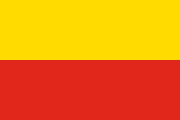
Kannada 4444 The popular but unofficial flag of the Kannada people. The Indian state of Karnataka does not have an official flag.
East, Central and Southeast Asia
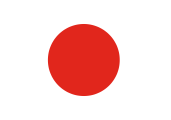
Japan

South Korea

North Korea
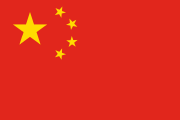
China
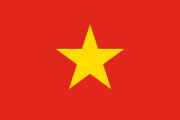
North Vietnam
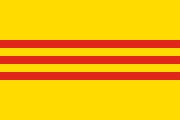
South Vietnam

South Vietnam
PRG flag 4545 Flag of the Viet Cong. Flown by the communist Provisional Revolutionary Government of the Republic of South Vietnam, which claimed to be the legitimate government of South Vietnam and was recognized by most Eastern Bloc states.
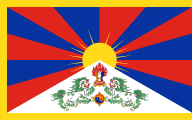
Tibet
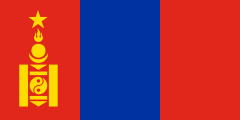
Mongolia
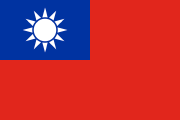
Taiwan 4646 The flag of the Republic of China, the government of Taiwan. Banned on the mainland, as the People's Republic of China claimed sovereignty over the island.
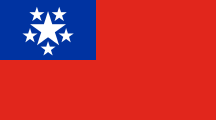
Burma
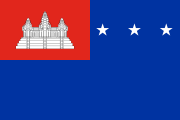
Khmer Republic
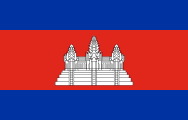
Cambodia
GRUNK flag 4747 Flown by the Royal Government of the National Union of Kampuchea, a government-in-exile based in Beijing and Hong Kong.

Laos
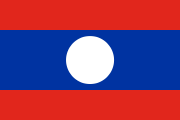
Laos
Pathet Lao flag 4848 Flown by the communist Pathet Lao government-in-exile in Hanoi.
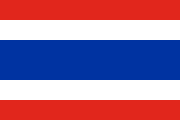
Thailand
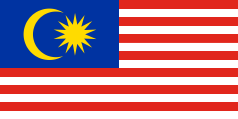
Malaysia
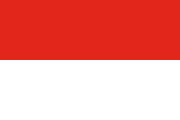
Indonesia

Singapore

Sarawak

Philippines

Brunei
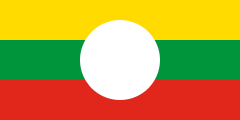
Shan

Sabah

Karen 4949 Flown by Karen nationalists seeking independence and separation from Burma.

East Turkestan 5050 The national flag of the Uyghur people, banned within the People's Republic of China. Xinjiang Region does not have an official flag.

Ainu
Oceania
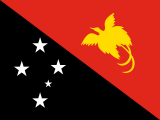
Papua New Guinea

Aboriginal Australians

Australia
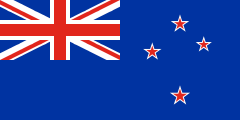
New Zealand

Hawaiʻi

Fiji

Nauru
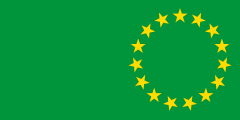
Cook Islands
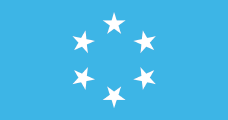
Micronesia

Western Samoa
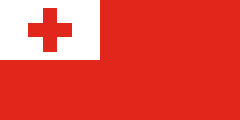
Tonga

Wallis and Futuna

Northern Mariana Islands
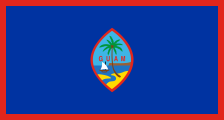
Guam
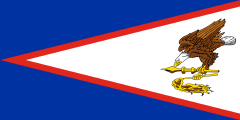
American Samoa
North America

Canada
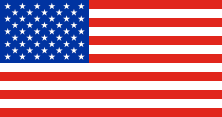
United States

Bermuda

Québec
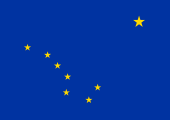
Alaska
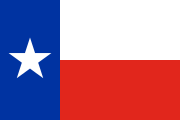
Texas

Acadia
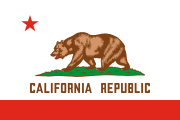
California

Cherokee
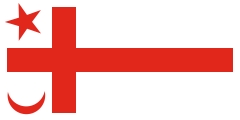
Mi’kmaq

Métis

Northern Cheyenne

Oglala Lakota

Arapaho
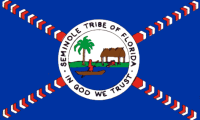
Seminole

Navajo
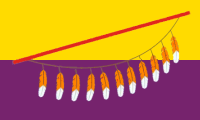
Papago
The Caribbean

Jamaica

Trinidad and Tobago

Antigua
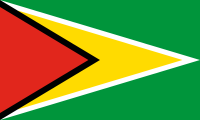
Guyana
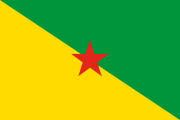
Guyane
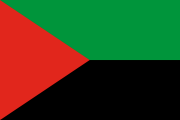
Martinique 5151 An unofficial flag flown by Martinican nationalists and occasionally by local municipalities.
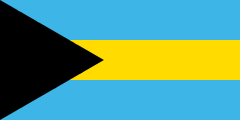
The Bahamas
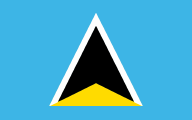
Saint Lucia
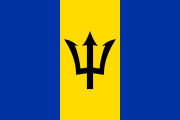
Barbados
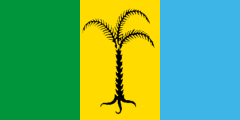
Saint Christopher-Nevis-Anguilla
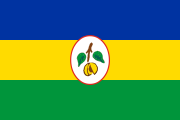
Grenada

Suriname

Netherlands Antilles

Anguilla 5252 The unofficial but popular cultural flag of the island.
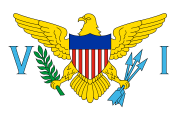
Virgin Islands (U.S.)
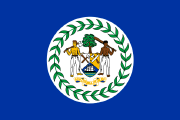
Belize
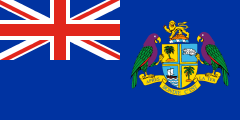
Dominica
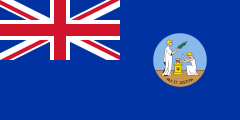
Saint Vincent
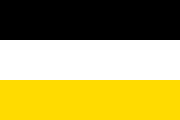
Garifuna
Latin America
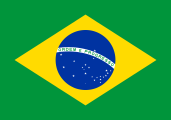
Brazil

Mexico

Peru
national ensign 5353 Flown by the government, the navy, the national police, and national sports teams. Raised at major ceremonies. The army uses a similar flag with a different coat of arms.
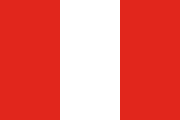
Peru
national flag 5454 Allowed to be flown by anyone.

Guatemala

Argentina

Honduras
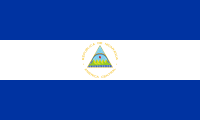
Nicaragua

El Salvador
national flag 5555 The most common flag, flown over most government buildings, at ceremonies, by diplomatic missions and often by public citizens.

El Salvador
inscribed flag 5656 An alternative government flag, most commonly flown by the armed forces but also on some public buildings and offices.
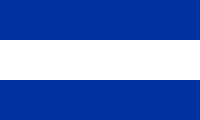
El Salvador
plain flag 5757 The simplest version of the national flag, flown by some private citizens.

Paraguay
front side

Paraguay
back side

Costa Rica
national flag 5858 The most common Costa Rican flag. Officially designated for private citizens, but in practice often used on government buildings and schools too.

Costa Rica
national ensign 5959 Flown by the government and by diplomatic missions, although also used sometimes by private citizens.

Puerto Rico
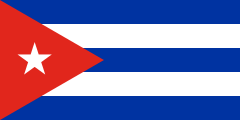
Cuba

Uruguay
national flag 6060 Allowed to be flown by anyone.

Uruguay
flag of Artigas 6161 A traditional military emblem, ceremonially flown alongside the national flag at government buildings.

Uruguay
flag of the Treinta y Tres 6262 A historic flag, ceremonially flown alongside the national flag at government buildings.

Dominican Republic
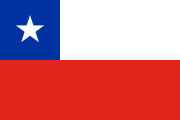
Chile
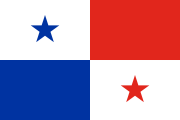
Panama
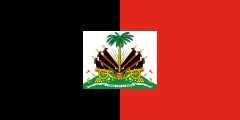
Haiti

Venezuela
national ensign 6363 Flown by the government and armed forces, and unofficially used by many private citizens.
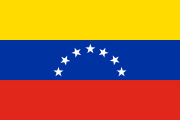
Venezuela
national flag 6464 Allowed to be flown by anyone.

Colombia

Ecuador

Bolivia
state flag 6565 Flown by the governmnent. The armed forces flew a similar flag with olive and laurel branches around the coat of arms.
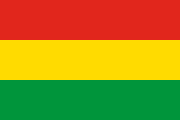
Bolivia
national flag 6666 Allowed to be flown by anyone.

Aymara

Quechua
Other International and Cultural Flags

United Nations
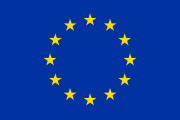
Europe

Organization of African Unity

Buddhist Flag
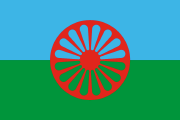
Romani

Pan-African Flag

Esperanto

Red Cross

Red Crescent
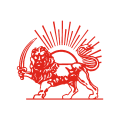
Red Lion and Sun
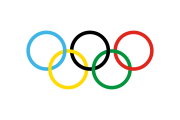
Olympic Games
Events of 1973
AFGHANISTAN • Prince Mohammed Daoud Khan overthrew the monarchy of Afghanistan and declared a republic on July 17. The year 1929 (the year the Musahiban dynasty came to power) was removed the from the country's emblem. It is not clear if any flags with this minor change were made before the republic adopted an entirely new flag in 1974.
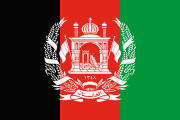


AINU • The artist Bikki Sunazawa designed a flag for the Ainu people, depciting a red arrow soaring beneath the blue skies of Hokkaido.

THE BAHAMAS • The Bahamas became independent from the United Kingdom on July 10.

COOK ISLANDS • The Cook Islands adopted a flag on July 23.

EQUATORIAL GUINEA • A new emblem was added to the national flag on July 29.
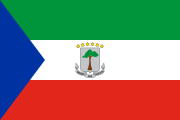


FLANDERS • The Dutch Cultural Community in Belgium officially adopted the Flemish flag on September 12. It was based on the banner of arms of the medieval County of Flanders, which had been flown continuously since at least the 13th century.
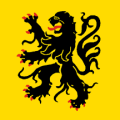


GREENLAND • A nordic cross flag for the country was proposed in a local newspaper.

GUINEA-BISSAU • Guinea-Bissau declared independence from Portugal on September 24.

NORTHERN IRELAND • The Northern Ireland Parliament was dissolved by the British government on July 18, which by extension abolished the Ulster Banner. In practice the flag has continued to represent Northern Ireland in several contexts, especially sporting events. However, it remains a controversial symbol and is flown more or less exclusively by Unionists.

OROMIA • The Oromo Liberation Front was established on April 15. Its flag, a red-green-red tricolour with a sycamore tree emblem, has become the preeminent emblem of the Oromo people.

SARAWAK • The flag of the former Kingdom of Sarawak was abandoned in favour of a entirely different flag on August 31. The flag incorporated the red-white bicolour used by certain Malay political parties and on the flags of Indonesia and Singapore.



SAUDI ARABIA • The size of the sword and inscription on the national flag was modified on March 15.
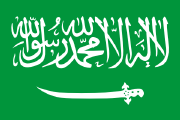


WESTERN SAHARA • The Popular Front for the Liberation of Saguia el-Hamra and Río de Oro (POLISARIO) was established with the aim of winning the independence of the Spanish Sahara.

Notes
1 Often (but not always) flown by the royal house and the government. ↩
2 Flown by anyone. ↩
3 Flag of the Liberation Front of Mozambique, which aimed for independence from Portugal. Direct predecessor of the modern flag of Mozambique. Portuguese colonies did not have official flags. ↩
4 Flag of the National Liberation Front of Angola, which aimed for independence from Portugal, and its government-in-exile in Kinshasa. Portuguese colonies did not have official flags. ↩
5 Flag of People's Movement for the Liberation of Angola, a competing independence movement. Direct predecessor of the modern Angolan flag. ↩
6 Flag of the National Union for the Total Independence of Angola, yet another independence movement. ↩
7 Flag of the Movement for the Liberation of São Tomé and Príncipe, which aimed for independence from Portugal. Direct predecessor of the modern flag. Portuguese colonies did not have official flags. ↩
8 Flag of the Zimbabwe African National Union, which sought majority rule in the breakaway British colony of Rhodesia. The territory's illegal white supremacist government flew a green and white flag with the Rhodesian coat of arms. ↩
9 Flag of the Zimbabwe African People's Union, a competing liberation movement. ↩
10 Flag of the South West Africa People's Organisation, which sought independence from South Africa. Direct predecessor of the flag of Namibia. The territorial government did not have an official flag. ↩
11 Flag of the Eritrean Liberation Front, which sought independence from Ethiopia. Derived from the previous national flag. The provincial government did not have an official flag. ↩
12 Flag of the Front for the Liberation of the Somali Coast, which sought indepdence from France. Eventually became the flag of Djibouti. The French Territory of the Afars and the Issas did not have an official flag. ↩
13 Flag of the Oromo Liberation Front, a nationalist liberation movement within Ethiopia. Oromia did not have an official flag within Ethiopia at this time. ↩
14 Flown by the Popular Front for the Liberation of Saguia el-Hamra and Río de Oro, which sought indepdence from Spain. The Spanish Sahara colony had no official flag, but ships registered there did fly a blue and yellow pennant. ↩
15 Flown by the Federation of Arab Republics. Its member states sometimes distinguished their flags by adding their country's name in small gold writing below the emblem. ↩
16 Flown by the government, and often by private citizens. In certain ceremonial settings, the ratio was 1:3. ↩
17 Allowed to be flown by anyone. ↩
18 Flown by private citizens and municipalities. ↩
19 Flown by the federal government and the armed forces. ↩
20 Allowed to be flown by anyone. ↩
21 Flown by the royal house, the government, and the armed forces. Also granted to a select list of private institutions and companies. ↩
22 Allowed to be flown by anyone. ↩
23 Flown only on state-owned buildings and naval ships. ↩
24 Allowed to be flown by anyone. ↩
25 Flown on government buildings and coast guard ships. ↩
26 Flown for all purposes. A three-tailed version of the national flag is flown by the military. ↩
27 Allowed to be flown by anyone. ↩
28 Flown by the government, border guard, and public universities. The armed forces fly a version with a swallowtail cut. ↩
29 During the rule of the junta, the shade of blue on the national flag was described as notably darker. ↩
30 Northen Ireland has not had an official flag since 1973, but the Ulster Banner is still flown by some sporting teams and private citizens. More or less exclusively a unionist symbol. Nationalists tend to fly the Irish tricolour instead. ↩
31 Allowed to be flown by anyone. ↩
32 Flown over the Prince's Palace and government buildings. ↩
33 The traditional Catalan flag. ↩
34 The flag preferred by supporters of Catalan independence. ↩
35 Flown over the Presidential Palace, parliament, provincial legislatures, and other government buildings. Private use highly restricted. ↩
36 Flown by embassies, airports, and merchant ships. Private use strictly banned. ↩
37 Flown by the diplomatic service in exile and the Estonian disaspora. Flying the national flag was banned under the Soviet occupation. ↩
38 Flown by the diplomatic service in exile and the Lithuanian disaspora. Flying the national flag was banned under the Soviet occupation. ↩
39 Flown by the diplomatic service in exile and the Latvian disaspora. Flying the national flag was banned under the Soviet occupation. ↩
40 Banned within the People's Republic of China. The Tibet Autonomous Region does not have an official flag. ↩
41 Flown in the Indian-controlled parts of the disputed region of Kashmir. ↩
42 Flown in the Pakistan-controlled parts of the disputed region of Kashmir. ↩
43 Flown by nationalists and separatists. The Indian state of Nagaland does not have an official flag. ↩
44 The popular but unofficial flag of the Kannada people. The Indian state of Karnataka does not have an official flag. ↩
45 Flag of the Viet Cong. Flown by the communist Provisional Revolutionary Government of the Republic of South Vietnam, which claimed to be the legitimate government of South Vietnam and was recognized by most Eastern Bloc states. ↩
46 The flag of the Republic of China, the government of Taiwan. Banned on the mainland, as the People's Republic of China claimed sovereignty over the island. ↩
47 Flown by the Royal Government of the National Union of Kampuchea, a government-in-exile based in Beijing and Hong Kong. ↩
48 Flown by the communist Pathet Lao government-in-exile in Hanoi. ↩
49 Flown by Karen nationalists seeking independence and separation from Burma. ↩
50 The national flag of the Uyghur people, banned within the People's Republic of China. Xinjiang Region does not have an official flag. ↩
51 An unofficial flag flown by Martinican nationalists and occasionally by local municipalities. ↩
52 The unofficial but popular cultural flag of the island. ↩
53 Flown by the government, the navy, the national police, and national sports teams. Raised at major ceremonies. The army uses a similar flag with a different coat of arms. ↩
54 Allowed to be flown by anyone. ↩
55 The most common flag, flown over most government buildings, at ceremonies, by diplomatic missions and often by public citizens. ↩
56 An alternative government flag, most commonly flown by the armed forces but also on some public buildings and offices. ↩
57 The simplest version of the national flag, flown by some private citizens. ↩
58 The most common Costa Rican flag. Officially designated for private citizens, but in practice often used on government buildings and schools too. ↩
59 Flown by the government and by diplomatic missions, although also used sometimes by private citizens. ↩
60 Allowed to be flown by anyone. ↩
61 A traditional military emblem, ceremonially flown alongside the national flag at government buildings. ↩
62 A historic flag, ceremonially flown alongside the national flag at government buildings. ↩
63 Flown by the government and armed forces, and unofficially used by many private citizens. ↩
64 Allowed to be flown by anyone. ↩
65 Flown by the governmnent. The armed forces flew a similar flag with olive and laurel branches around the coat of arms. ↩
66 Allowed to be flown by anyone. ↩